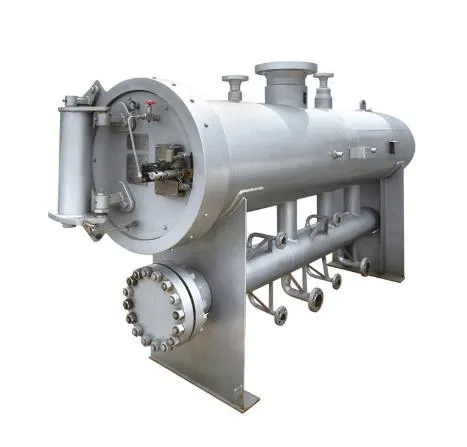
Dec . 03, 2024 16:24
Back to list
Understanding the Key Principles of Pressure Vessel Design and Safety Regulations
Understanding Pressure Vessels Design, Applications, and Safety Considerations
Pressure vessels are specialized containers designed to hold gases or liquids at a pressure substantially different from the ambient pressure. They are critical components in various industries, including oil and gas, chemical processing, and power generation, where they are used to store and transport substances safely under high pressure.
Design Principles
The design of pressure vessels is governed by a set of codes and standards to ensure safety and reliability. The most commonly referenced standards are set by the American Society of Mechanical Engineers (ASME), particularly the ASME Boiler and Pressure Vessel Code (BPVC). This code outlines the materials, design requirements, construction methods, and inspection protocols for pressure vessels.
The primary factors influencing the design of a pressure vessel include the type of material used, the operating pressure and temperature, and the intended use of the vessel. Common materials for pressure vessels include carbon steel, stainless steel, and various alloys, selected for their durability and resistance to corrosion and extreme temperatures. Engineers must also consider the geometry of the vessel, often opting for cylindrical shapes with hemispherical or domed ends, as these designs can better withstand internal pressure.
Applications
Pressure vessels are ubiquitous in many industries. In the oil and gas sector, pressure vessels are used for gas storage and separation processes, while in chemical processing, they may serve as reactors or storage tanks for volatile substances. Power plants utilize pressure vessels in steam generation systems and heat exchangers. Additionally, they are essential in pharmaceuticals for processes requiring high-pressure reactions.
pressure vessel

Apart from these industrial applications, pressure vessels also play a critical role in everyday life. For instance, air compressors and propane tanks in households function as pressure vessels, demonstrating their versatility. Furthermore, modern applications, such as hydrogen storage for fuel cells and compressed natural gas (CNG) tanks in vehicles, highlight the growing importance of pressure vessel technology in sustainable energy solutions.
Safety Considerations
Given the high stresses involved and the potential hazards of failure, safety is paramount in the design and operation of pressure vessels. A breach can lead to catastrophic accidents, resulting in severe injuries, fatalities, and substantial property damage. Therefore, rigorous testing and maintenance practices are essential.
Regular inspections and non-destructive testing methods, such as ultrasonic testing and radiography, are used to monitor the integrity of pressure vessels over time. These practices help to identify weaknesses or potential failures before they occur. Moreover, safety relief devices, such as pressure relief valves, are installed to prevent over-pressurization, ensuring that any excess pressure is safely released.
Conclusion
In summary, pressure vessels are integral to various industrial processes and applications, providing safe storage and processing solutions for high-pressure environments. Their design is guided by strict regulations and standards, with an emphasis on safety and reliability. As industries continue to evolve, the importance of innovative pressure vessel designs will only grow, particularly as we transition towards greener energy sources. Understanding the complexities of pressure vessels not only emphasizes their critical role in industry but also highlights the ongoing need for stringent safety practices and technological advancements in this field.
Latest news
-
Safety Valve Spring-Loaded Design Overpressure ProtectionNewsJul.25,2025
-
Precision Voltage Regulator AC5 Accuracy Grade PerformanceNewsJul.25,2025
-
Natural Gas Pressure Regulating Skid Industrial Pipeline ApplicationsNewsJul.25,2025
-
Natural Gas Filter Stainless Steel Mesh Element DesignNewsJul.25,2025
-
Gas Pressure Regulator Valve Direct-Acting Spring-Loaded DesignNewsJul.25,2025
-
Decompression Equipment Multi-Stage Heat Exchange System DesignNewsJul.25,2025

